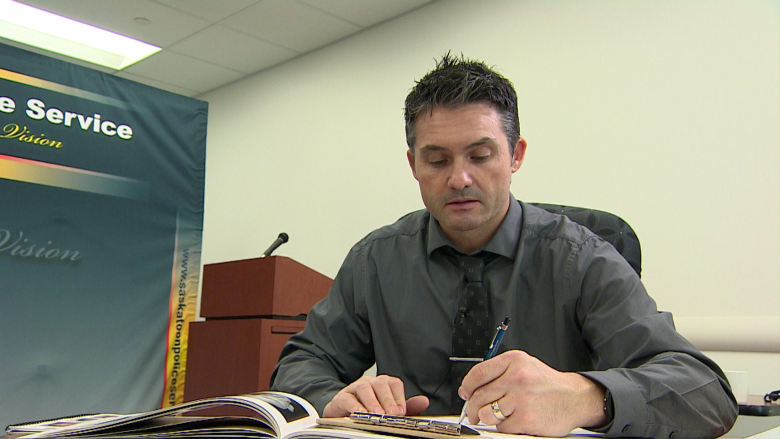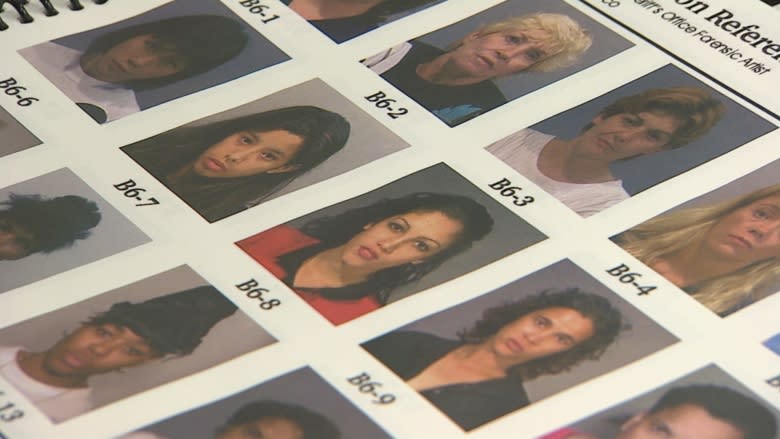Sketching for clues: Why some Sask. police forces still draw suspects
When it comes to composite sketches of crime suspects, Canadian police forces are going back to the drawing board — literally.
"At one time there was interest in utilizing computer programs," said Canada RCMP spokesperson Harold Pfleiderer.
"The general shift has been back to paper and pencils."
That's because people are more likely to spend time contemplating an image if it's hand drawn, he said.
People often expect digital images to be an exact replica of a person, whereas a pencil drawing could be something that will make people stop and wonder if they've seen that person before.
In Saskatchewan, there are only a few certified forensic sketch artists.
"Composite sketches are usually seen as almost a last resort," said Sgt. Terry Laverty, a certified forensic artist with the Saskatoon Police Service.
He reckons he's been around the longest, but that's not his full-time role. Laverty is currently assigned to the internal investigations section.
Sketches are seen as a last resort because there is so much other evidence now available to police, like surveillance footage.
"Maybe it's a timely matter where DNA or any other type of evidence might not be available," he said.
RCMP Const. Heidi Marshall added that, "Composite artists are aware of the infrastructure of the face, the underlying muscles and tissue, and they have a better understanding of the average person. Their drawings can reflect this intimate knowledge."
Marshall is the only certified forensic artist with the Saskatchewan RCMP and does that work in addition to her regular duties out of the Warman detachment — often on her days off.
When Marshall began sketching 12 years ago, she had about two to four requests per year. Now she's averaging about three requests a month.
One of those drew particular attention from the public.
The Osler Sketch
At the end of October, the Saskatchewan RCMP released a sketch of a man they say fired shots at an officer near Osler.
The sketch garnered a lot of attention on social media, but it wasn't because people had leads on the man in question; rather they were commenting on and mocking the suspect's hair as it was portrayed in the sketch.
Marshall drew it.
Marshall said a composite sketch is an investigation tool and that means it also has limitations.
She said the comments were harsh and wants people to know sketches are based on a person's memory.
"Even though [the sketch] might look strange or seem unrealistic, there really are people out there that have strange hair.
"My heart goes out right away to the witness," she said to the thought of them reading what people wrote.
Marshall pointed out that some witnesses only have minutes to see a suspect.
Furthermore, the sketch process is often emotional for the person, as they witnessed a crime that was likely violent or traumatic.
"I've had witnesses tear up at the end. They just say, 'Oh my God. That's what I was looking at. That's him.'"
Like a caricature
Sketch artists conduct extensive interviews with witnesses prior to their first draft.
Laverty said it becomes an exercise in bringing out information from the person's mind and that process is driven by helping them identify familiar features.
"The sketches are based on visual recall, as opposed to a memory," he said.
Laverty takes a witness through multiple photos of other people. He gets them to identify characteristics on those people that match the suspect, bringing together separate features to create an individual.
Sketch artists work to coax out what a witness considers particular about a suspect, like prominent scars, unique facial characteristics, acne, wrinkles, facial piercings, moles and tattoos.
All details matter, though, from expressions to clothing to the way a person smells to the colour of their hair.
Laverty likens the work he does to that done by caricature artists, because his goal is to find what distinguishes someone from everyone else.
"They're identifying features in people that stand out," he said.
"By no means are they a cartoon type of image, but that should represent to anybody that knows that person or has seen that person frequently enough to identify them."
Most often sketches rely on details from a witness, but sketches are also made to create a clearer image of a person seen in a grainy surveillance video, for facial reconstruction or to age someone.
Marshall was once contacted about a fugitive who had been on the run for 20 years.
"They had one picture of her from around the same time she disappeared and so they requested an age enhancement," she said.
"A few months later they phoned me to tell me they had actually apprehended the suspect without incident."
Pencils over PCs
Laverty isn't worried about being replaced by a computer, nor does he think the art of forensic sketching is fading away.
He hasn't been trained with technology and finds a pencil to be more efficient. For sketch artists, it can be a lot easier to alter an eyebrow arch with an eraser, and a pencil will never die.
Plus, Laverty and Marshall are passionate about the work they do as forensic artists.
"It's a different way of using my brain," Laverty said. "It allows me to do the creative side."



